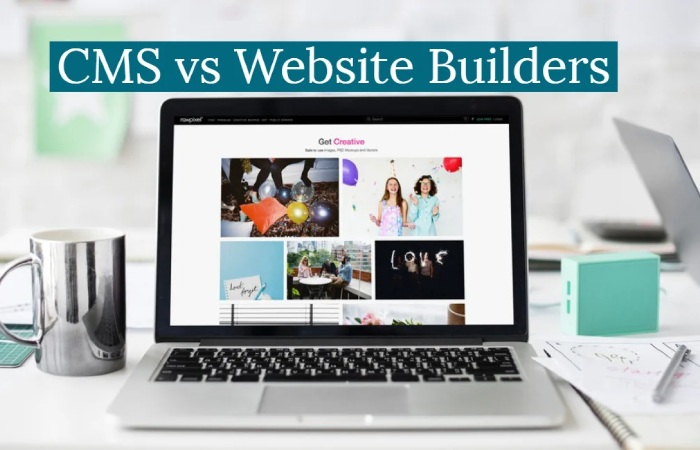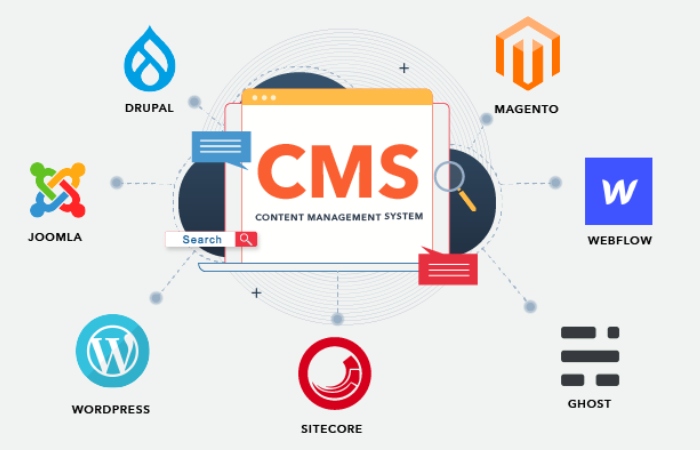Confused by the daunting task of choosing a suitable CMS Systems for your website? Countless businesses are left scratching their heads over this important decision, not knowing where to turn.
But here’s the hard truth: choosing the wrong CMS could spell doom for your online presence. Imagine wasting time and resources on a platform that doesn’t meet your needs, only to be faced with endless frustration and failure.
But don’t be afraid. This detailed guide reveals the five best CMS systems built for your website. Whether you’re a newbie entrepreneur or an established web design company in Australia, finding the perfect CMS is easy.
CMS vs Website Builder

A website builder is for you if you prefer an all-in-one solution for creating and hosting a website. It allows you to purchase your domain, customize the look of your site, and enable advanced media elements such as animations and scrolling effects.
While you focus on design and content, the hosting platform handles maintenance, security, backups, and more.
However, this convenience comes at the price of flexibility, as website builders lack two critical features that CMS platforms have:
- Extensive content management options
- Customization options
Thus, according to experienced web design companies in Australia, website builders are ideal for individuals or businesses who want to quickly create visually appealing websites, such as for agencies, artists or restaurants.
However, a CMS is the best choice for those looking for advanced features and more customization options.
Now, you can decide which is right for you – a website builder or a CMS.
How do you choose the suitable CMS?
If you decide to use a CMS, experienced web design companies in Australia will refine your choice based on five criteria.
- Ease of Use: The CMS should be easy for all team members, from content creators to developers, to facilitate a smooth workflow.
- Customizable: Look for a CMS that balances ease of use and customization capabilities, allowing scalability as your business grows.
- Security: Choose a platform with robust security features and protocols to protect your content and users.
- Pricing: Consider a CMS that fits your budget and offers scalable plans to accommodate your business growth.
- Market Distribution: Check the success of other brands using a CMS, as this may indicate the suitability and scalability of the platform for your business.
Types of CMS Platforms

Platforms like WordPress and Joomla are already popular in the web design world, so we’ll discuss other less famous but incredible options Australian web design companies use.
1. Webstream
Webflow is a graphic content management system designed for web designers who want control without the hassle of hosting, security, or performance.
Ideal for experienced designers and marketers, it offers complete design autonomy and robust security features such as AWS Shield protection and SSL certification.
Plus, its customization is second to none, with over 150 templates and complete styling control, including the ability to create reusable elements.
It also keeps your site secure with two-factor authentication, role-based permissions, and continuous monitoring.
2. Content stack
Contentstack offers a self-contained web content management system ideal for companies looking to optimize content delivery across multiple digital channels.
Designed for large enterprises with ample developer resources, it boasts enterprise-grade capabilities with complete control over content types, programming languages, and integrations.
While it presents a steep learning curve for non-developers, including content managers, its text editor and scheduling tools make content creation and management easy.
In addition, its customization options are extensive, allowing developers to create content models for optimal display on various devices and easily integrate them with their preferred technologies.
3. Plot block
Australian web design companies often recommend Storyblok to developers and marketers due to its versatility, which extends to creating corporate websites.
E-commerce platforms, mobile apps and more. That’s why it’s an ideal solution for content managers and marketers.
It offers unparalleled ease of use and combines a modern standalone architecture with visual editing tools tailored to marketers’ needs.
With custom content blocks and advanced localization features, Storyblok makes delivering content across multiple countries, languages, and device types easy.
It is hosted on AWS and prioritizes security with measures like web application firewalls and daily backups.
4. OPISHKA3
TYPO3 is an open-source CMS designed for enterprise-grade websites and is ideal for developers or teams with extensive technical resources.
Despite its excellent out-of-the-box functionality, covering over 9,000 functions, TYPO3 has a steep learning curve even for experienced users.
Customization is possible by integrating over 6,000 third-party tools from the TYPO3 extension repository.
Security features, regular updates, and compliance tools are provided, but the tasks of updating and maintenance fall on the shoulders of site owners.
5. PrestaShop
PrestaShop fills a niche in the e-commerce CMS market, making it ideal for store owners with technical knowledge. Offering over 6,000 additional modules and themes, it balances ease of use and functionality.
However, getting started with PrestaShop requires technical setup and hosting, which contrasts with the simplicity of Shopify. The platform boasts extensive out-of-the-box features that make it easy to set up for large online stores.
The last word
Whether you choose an all-in-one platform like Storyblok, an enterprise solution like TYPO3, or an e-commerce-focused CMS like PrestaShop, thorough research is the key to success. So, if you are confused, seek professional help to decide.


